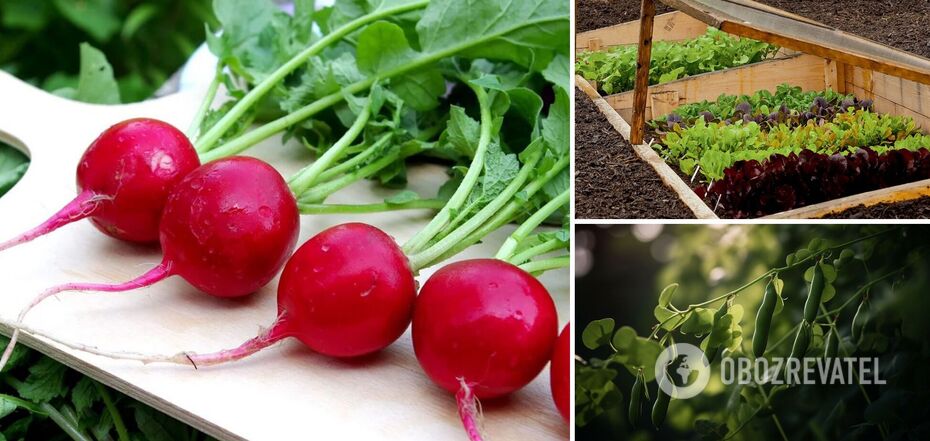Life
Plant today: which vegetables yield a good harvest in any soil
Some crops will yield a good harvest even on poor soil. It takes an average of 3-4 years to restore barren sandstone or clay.
Therefore, early-ripening vegetables and herbs can be planted in soil that is low in nutrients. For example, onions, radishes, or peas. These are undemanding crops that will grow without any problems even in the absence of fertilizers. Read the OBOZREVATEL article to find out which vegetables give a generous harvest on any soil.
Salad crops
When growing greens, the main thing is to provide them with timely and regular watering. This way, the leaves won't start to get bitter.
You can plant in poor soil:
- Lettuce
- Spinach
- Arugula
- Dill
- Sorrel
They grow on average in 1-2 months and quickly absorb a minimum of nutrients from the soil.
Salad crops can be sown several times - in spring and summer.
Chard
Chard requires better conditions and fertile soil, as it produces many large leaves that need nutrients.
Onions
Onion greens can be planted in any garden bed. They are completely unpretentious crops that will go well with other herbs. Onions can be planted in the aisle so that they do not need a separate bed.
Bush asparagus beans
Heat-loving beans can be planted in the second or third decade of May. It is an unpretentious and high-yielding crop that grows quickly even in not very favorable conditions.
Radish
Radish yields poorly only on acidic soil. The main difficulties in growing radishes can only arise from late sowing. The fact is that radishes like coolness and short daylight hours. That's why it is sown as soon as the soil dries out a bit and warms up after winter. Like salad greens, radishes need abundant and frequent watering.
Horseradish
Fast-growing and unpretentious horseradish will grow almost everywhere. But it should be borne in mind that horseradish grows in the area allotted to it and may even begin to "strangle" its neighbors. Therefore, it is better to plant it somewhere on the outskirts of the garden and fence it off with cans, slate or boards.
Peas
Peas, as they say, "feed themselves." Its roots extract nitrogen from the environment on their own, so it is generally undemanding in terms of conditions, soil, and fertilizers.
Peas can also be used as fertilizer. After harvesting, the roots are left to rot. This enriches the soil with nitrogen and organic matter.
By the way, there is a fertilizer that can be used to fertilize almost any crop. The only limitation is the frequency of such fertilization.
Subscribe to OBOZREVATEL's Telegram and Viber channels to keep up with the latest developments.



























